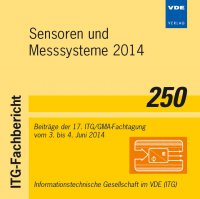Energy improved wake-up strategy for wireless sensor networks
Konferenz: Sensoren und Messsysteme 2014 - Beiträge der 17. ITG/GMA-Fachtagung
03.06.2014 - 04.06.2014 in Nürnberg, Deutschland
Tagungsband: Sensoren und Messsysteme 2014
Seiten: 6Sprache: EnglischTyp: PDF
Persönliche VDE-Mitglieder erhalten auf diesen Artikel 10% Rabatt
Autoren:
Kumberg, T.; Tannhaeuser, R.; Gamm, G. U.; Reindl, L. M. (Department of Microsystems Engineering - IMTEK - Electrical Instrumentation, Georges-Koehler-Allee 106. 79110 Freiburg; Germany)
Inhalt:
The available energy of wireless sensor nodes is limited due to the fact that they often operate on batteries and due to their small size. One approach to reduce power consumption of wireless sensor nodes, is to reduce their active time. This can be done by duty cycling or by using a wake-up strategy as presented by Gamm et al. 2012. In this approach, a node is inactive until it gets awaken by another node or an external event. The energy efficiency of the wake-up strategy depends on the energy consumed per wake-up message. In this paper we investigate the wake-up messages introduced by Gamm et al. 2012 to develop a method to reduce their duration from 13.2 ms to 2.26 ms, which corresponds to an energy saving of around 83 %. To examine sensitivity and wake-up range of the wake-up receiver for messages of different durations four message types of different lengths are tested. For three types, the receiver reaches a sensitivity of -50 dBm and a range of 45 meters. Using the shortest type of message, the wake-up range is around 30 meters.


